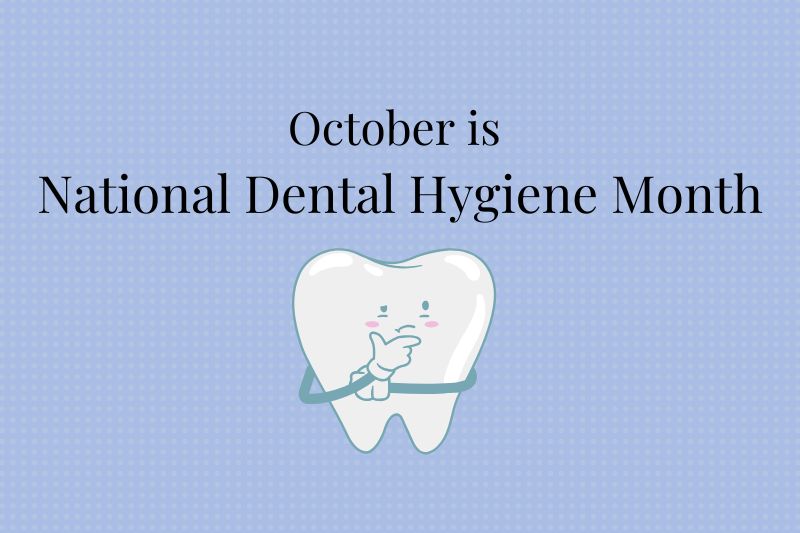These thoughts are sent into the dentistry realm not from a dental practitioner or researcher but from a patient. I presume to do so based on two facets of my history. First, I have far more than the average level of dental problems (although perhaps not disproportionately since I am 79 years old) and have seen and/or talked with 8 or 9 dentists about my needs over the last three years. This number is partially the result of dentist-shopping (more on this below) and as well that I relocated in the midst of seeking treatment. Second, having done my doctoral work in Medical Humanities 35 years ago I have retained a strong interest in medical ethics and particularly the practitioner-patient relationship. The focus of this article is on the quality of that relationship as experienced by one patient and specifically on the nature and shape of communications between patient and dentist and impediments to their effectiveness.
- When I read the ADA Code of Ethics I was surprised to find approximately a half page of guidelines pertaining to confidentiality of patient records but comparatively little about privacy and confidentiality of patient communications: “…to protect the patient’s confidentiality…[and] privacy” (III.1). A glance around dental consultation/treatment rooms, however, reveals the intrinsic impossibility of achieving this. Alone among medical practitioners in my experience, dentists’ offices are built to prevent privacy and thus confidentiality. I have yet to see one that was a closed and private space; they usually lack doors (and these are rarely closed) and typically have openings at the tops and ends of the walls separating these spaces. You will not find privacy, or even the opportunity for it, there. The result of this type of construction, I believe, is that both dentist and patient are constrained, consciously and unconsciously, from communicating freely since there could easily be a half dozen or more patients and staff listening. Considering the universality of dental offices built in this manner one has to wonder if lack of privacy was not their purpose. But why? What is its history and rationale? Does the profession assume that its patients have no need or desire for privacy?
- Picture yourself being led into the treatment room, ushered to the patient’s reclining chair, having a bib hung around your neck, and the chair tilted backward. In walks the dentist, these days almost always masked, and conversation begins. Since it is well known that spatial/physical positioning can reflect relative power positions and either facilitate or impede open communications, how would we appraise the likely nature of words shared between a prone and bibbed patient and a standing (maybe masked) dentist looking down on him or her? Having occupied that position as a patient more often than I would wish, I can say it feels inhibiting; one could, if susceptible, almost feel childlike, but in any event it does not encourage a conversation between peer adults in which discussion can flow readily, especially about difficult treatment decisions and possibly different treatment inclinations between patient and dentist.
(I have discovered another source who commented more colorfully on this scene: “When you’re in the dentist’s chair, the power imbalance between practitioner and patient becomes palpable. A masked figure looms over your recumbent body, wielding power tools and sharp metal instruments, doing things to your mouth you cannot see, asking you questions you cannot properly answer, and judging you all the while. The experience simultaneously invokes physical danger, emotional vulnerability, and mental limpness.” [from The Atlantic, May 2019, Ferris Jabr, “The Truth About Dentistry.”])
I say nothing new or surprising when I note that the quality of medical practitioner relations with their patients has well established effects on treatment cooperation and outcomes. The lack of privacy in these dental interchanges combined with the typical up-down positioning of dentist and patient in the consultation/treatment room has been for me, and I suspect many others, a significant impediment to satisfactory assessment and treatment discussions. Which leads me to…
- I suspect that in any medical setting practitioners find the matter of “patient autonomy” and patient partnership in treatment planning and execution among the most challenging. Patients feel entitled to a place at the table, so to speak, and to be heard and taken seriously. Patient “recalcitrance” and “care-resistant behavior” are readily available descriptors, whether more or less accurate, that can be drawn upon to avoid or disregard opinionated or otherwise inquisitive, challenging, or unpleasant seeming patients. But once it is agreed that they have a right to participation in decisions about their treatment, it is incumbent on practitioners not to resort too quickly to such dismissals.
Here is the relevant section of the ADA Code, from Principle III, which I drew from above:
Section 1 PRINCIPLE: PATIENT AUTONOMY (“self-governance”). The dentist has a duty to respect the patient’s rights to self-determination and confidentiality.
This principle expresses the concept that professionals have a duty to treat the patient according to the patient’s desires, within the bounds of accepted treatment, and to protect the patient’s confidentiality. Under this principle, the dentist’s primary obligations include involving patients in treatment decisions in a meaningful way, with due consideration being given to the patient’s needs, desires and abilities, and safeguarding the patient’s privacy.
These are fine words; I have affirmed and tried to live up to them as both a professional and as a patient, but their meaning is often less than self-evident and in the dental office, I submit, their implementation is often resisted by the dental professional. One of the dilemmas they are susceptible to is structural: experts have inherent authority in the occurrent subject matter and it is natural they could be chary about “less informed” opinions and even, sad to say, sometimes play the expert card to end the discussion. Which of course must be avoided if the ethical principle is to mean anything. “Standards of care” are essential in any medical practice but rarely point toward only one option with a particular patient, and options are always subject to change based on experience and research.
Here is another hard one for patients and dentists: “within the bounds of accepted treatment.” Accepted by whom and based on what? The journey that led to my writing this article began with my multiple dental problems and then took some unexpected turns when I began discussing alternatives to conventional filling of my unceasing cavities. I explored and found this statement on the ADA webpage (https://www.ada.org/resources/ada-library/oral-health-topics/silver-diamine-fluoride): “Biannual application of 38% SDF for advanced cavitated lesions may be relevant if access to care is limited, for uncooperative patients, or for patients when general anesthetic is not considered safe.” The above source also linked to a major review conducted by the ADA Center for Evidence Based Dentistry that said, among much more, the following: “Although the recommended interventions [with SDF and others] are often used for caries prevention, or in conjunction with restorative treatment options, these approaches have shown to be effective in arresting or reversing carious lesions. Clinicians are encouraged to prioritize use of these interventions based on effectiveness, safety, and feasibility.” (https://jada.ada.org/article/S0002-8177(18)30469-0/fulltext) This was good enough for me so I began suggesting use of SDF for those of my cavities that weren’t visible (because of the staining caused by SDF). I discovered that most dentists had had no experience with SDF and were not interested in trying it; others labelled it a “band-aid” or otherwise deficient for the job to be done. Which naturally made me wonder how any professional would dismiss an addition to their treatment armamentarium that was accepted by their professional association, based on sound research, and sought by patients. I found only one dentist ready to apply it. The dentist-shopping I mentioned above began here, partially because I wanted SDF as an option in managing my seriously beleaguered, remaining teeth, but also out of curiosity about how extensive the rejection went. Some simply said they were unfamiliar with SDF and not interested in learning (even when I offered myself as a learning module) and two said they didn’t think they could work with me, period. I have been forced to abandon hope in that area although I continue to believe that “bounds of accepted treatment” can, and often should, be a more flexible and commodious concept than it seems generally to be seen as.
I could offer examples about other points of contention, but I’m not interested in seeming to seek castigation of a profession whose services I rely on and appreciate. Suffice it to say that my futile experience seeking competence with SDF was not an anomaly. Even so, while I highly value dental services the common reluctance to consider “treating the patient according to the patient’s desires” so long as they aren’t unethical or dangerous has been a large disappointment. No doubt in many situations there is a conventional approach and it may in fact be the best, but what about second best or unconventional if that is the patient’s desire? (To this day not a single dentist has recommended what he/she considered the preferred treatment and followed that with a stated willingness to work with me on something less than preferred if that was my choice.) How often is the conventional approach supported by solid research and why not provide information on such research for those who seek it? I don’t mind being shown the error of my preferences and will correct them in response; the courtesy of receiving references and links is always appreciated but never, so far, offered. Even the willingness to go along with a patient who prefers a second or third rate option should usually be accepted when he or she has been fully informed of the likely consequences or predicted limited effectiveness. Patient age, dental and general physical condition, values, and predilections should be acknowledged and respected and, again, if patients are satisfied with and prefer the “second best” treatment, why not concede the point and collaborate? It is respectful to do so and, thinking again about the potency of the relationship, it lays the groundwork for future treatments, some of which might even be the dentist’s first choice. (And who’s to say that “future treatments” might not be more likely, in light of the generally reported level of dental-related anxiety among patients and patients-to-be, within a more collaborative setting?) As I was taught early in my career as a psychotherapist, “It doesn’t matter if you’re right if the patient won’t listen to you or breaks off contact.” This is by no means an adjuration to bend the knee to every patient whim, regardless how nonsensical or unethical, but to accept that part of the duty of a practitioner in what used to be called the “helping professions” is to find a way to help that is acceptable to the patient.
I want to end with words from a book I recommend to every person working in any medically related field. They were written over thirty years ago by a man dying of cancer and thus arose from that treatment milieu. But their applicability is far broader than that:
Not every patient can be saved, but his illness may be eased by the way the doctor responds to him—and in responding to him the doctor may save himself. But first he must become a student again; he has to dissect the cadaver of his professional persona…It may be necessary to give up some of his authority in exchange for his humanity, but as the old family doctors knew this is not a bad bargain. In learning to talk to his patients, the doctor may talk himself back into loving his work. He has little to lose and everything to gain by letting the sick man into his heart. (Anatole Broyard, Intoxicated By My Illness: And Other Writings on Life and Death; Ballantine Books, 1992, p. 57.)
Craig Brestrup, PHD
August 2024


